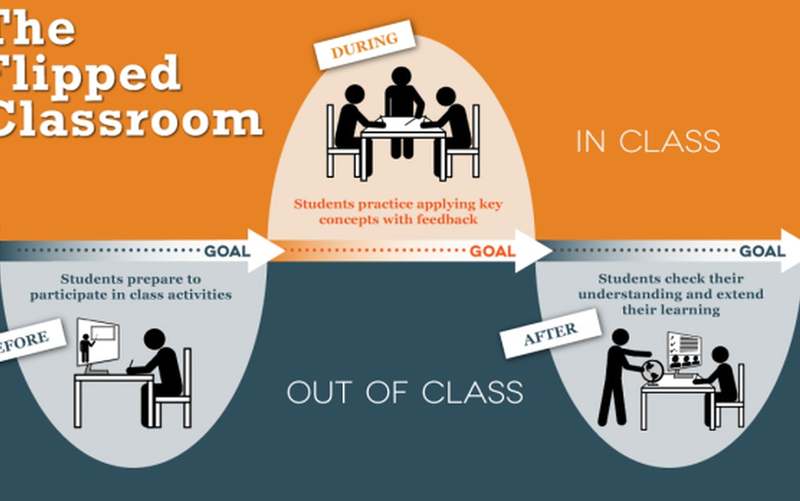e-Learning Ecologies MOOC’s Updates
Ubiquitous Learning: The Flipped Classroom
The flipped classroom in its simplest form is swapping the lecture part of a traditional classroom instructional model from inside the classroom to outside the classroom; in order that more time can be made available inside the classroom for more personalised learning.
In its most well known formulation - this involves the teacher creating instructional videos which the learners view outside the classroom for homework - they then do what was their homework (assignments, etc.) in class time where they can receive more personalised help. However as Jon Bergmann explains this is only one way in which a flipped classroom could take place. It doens't necessarily require videos and the key for him is answering the question - "What's the best use of your face-to-face class time?" For him as a Science teacher it was more time doing experiments and working on harder problems. For PE teachers he talked to - it was more time moving the body and less time explaining how the body should move. In my own experience it was to free up more time for investigative work in the maths classroom.
Other key lessons for Bergmann are that we must teach students how to view the videos (do the first few in the classroom and teach them how you want them to record notes) and also build in interactivity wherever possible.
Bergmann and Sams (2012) who are perhaps most famously associated with this practice no longer promote this particular model (which they call "Flipped Learning 101") but rather promote what they call "Flipped Mastery Learning." This involves making all their videos for the entire course available at once so that students are able to move through the material at their own pace.
While this practice is undoubtedly more efficient - and if applied well could free up enormous amounts of time in the classroom there is a key feature which requires further scrutiny.
This is the fact that no matter how well the time is spent in the classroom - the lecture has still been retained. That is, the instructional model is the same; essential learning takes place though transmission - from video to student - rather than knowledge being constructed by the learner or co-constructed by learner, peers and teacher. Kalantzis and Cope (2017) describe this as being a "didactic pedagogy... brought back to life."
The challenge then perhaps in considering the flipped classroom is not only to make the best use of the time available in the classroom but also to look at whether alternative ways of knowledge construction can be utilised.
References:
Bergmann, J. and Sams, A. (2012). Flip your classroom: Reach every student in every class every day.
Cope, B. and Kalantzis, M. (2017) e-Learning Ecologies: Principles for New Learning and Assessment.



@Mark @Kenya How to watch videos....that should be a prerequisite for all learners.
@Mark - Great job reinforcing the notion of pedagogical neutrality...I also really enjoyed the video you used to support your writing (I wonder how many kids wish they could pause their parents - smile). Your update makes clear the tremendous opportunities that are available when we teach students HOW to watch the videos for a flipped lecture as well as the opportunities inherent in active learning.
@Matt - yes - this is something I've been thinking about recently - as you say the challenge is two-fold - not only what do you do with the time that has been freed up - but also how do you make better use of video as a medium so it's not just a 'boring' lecture. There are certainly tools you can use to make lectures more interactive (edpuzzle etc.) but it feels like there's something bigger to be investigated.. not sure what the answer is - but let me know if you have any ideas!
Mark,
I enjoyed how you referenced the reading material from the course of the didactic pedagogy being brought back to life simply by transferring an in-class lecture to a recorded lecture. A Flipped Lesson can be just as boring and ineffective as traditional class lecture and certainly doesn't ensure that time is being any more well spent.
The challenge of not simply looking at time efficiencies, but rather improved ways of knowledge construction can start with an engaging lecture - whether in-person or with a recorded, flipped lesson.